Let's talk about Art: Las Meninas
"At first, art imitates life. Then life will imitate art.Then life will find its very existence from the arts." - Fyodor Dovstoevski.
¿How am I to write about what has been written so thoroughly about? ¿What is this, inside of me, that screams for me to do so and prove how little I really know?
There are works of art, wether painted, danced or written, that within them hold the strength to silence the constant murmur that inhabits our minds and elevates our consciousness to higher, and lighter, states of thought. There are fewer even, that later evoque analysis and close examination, as well as both admiration and awe, in all those who contemplate them and that in the end leave a print on the study of form, as is the case with Diego Velazquez, who at his 57 years would paint what would be considered by many - if not all - the best painting in Art History. And yet here, as I consider to tackle my writing on this matter, I feel the need to perhaps sway away from the clinical exam that dissects a work of art as if it were a tumor and surrender my words to the sentiment that the painting itself awakens in me; and be sure that my words won't suffice to describe that which has marveled artists and strangers alike.
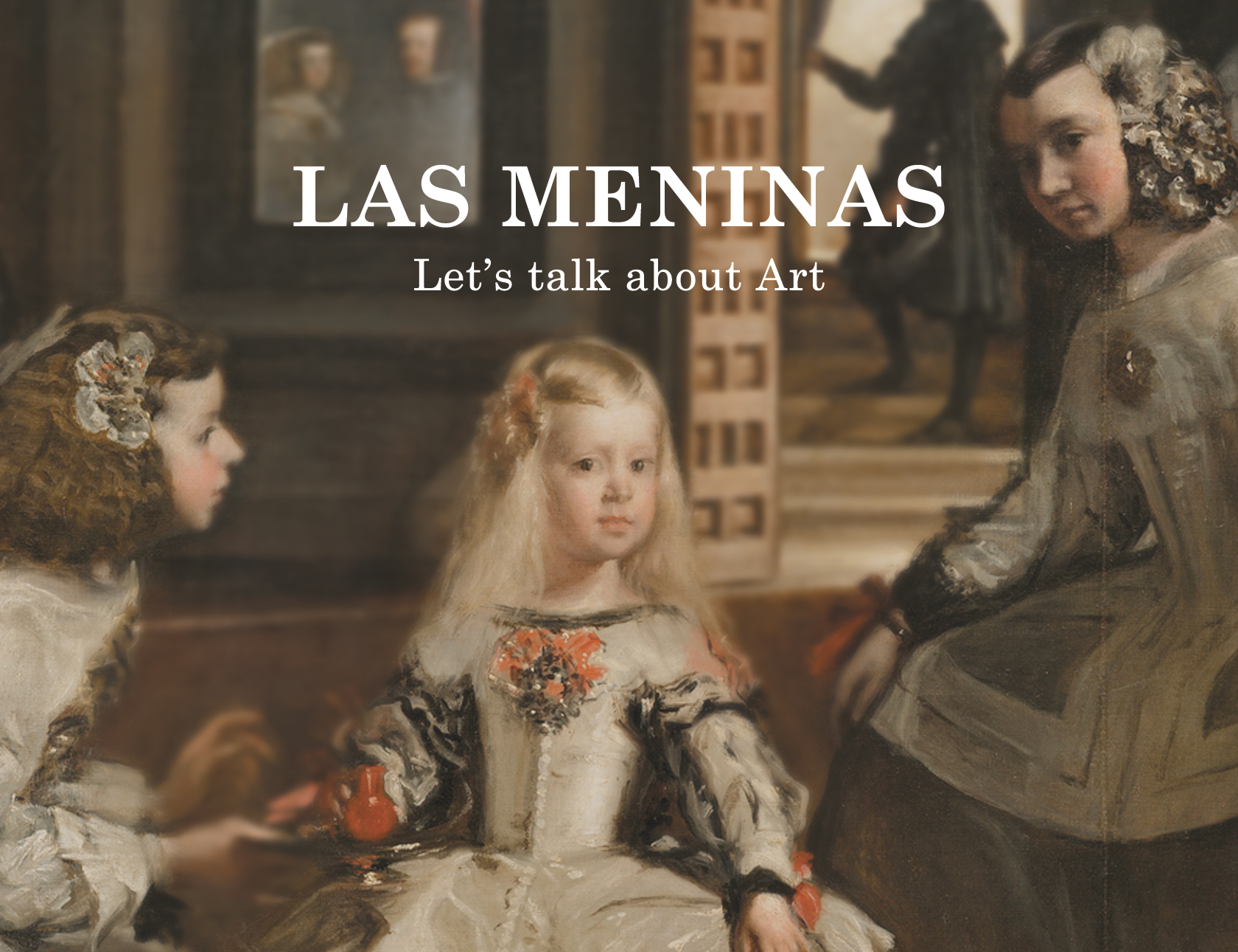
Metamorphosis
In the depths of Las Meninas, and beyond the mix of aesthetic and emotional beauty that beholds it, hidden in the soul of the painting, lies an atemporal conflict of theological nature that tries to illustrate the divine and earthly aspect of all artistic process. ¡¿Are there not angelic muses that sing to painters and poets?! ¡¿Ancient artworks inspired by godly spirits?! ¡¿Many others by fantastic tales and impossible dreams?! Whoever is to deny that which is ethereal and sublime that resides in his art, is to find himself ignoring, and perhaps rejecting, that which is elevated and perhaps, even eternal - and yet, ¿Isn't there a fragile quality to the process of creation? ¿A human quality?
This is a core subject hidden within Las Meninas, that in its reproduction of a scene taking place in the studio of Velazquez, portrays at the same time two paintings that hang, not by chance, in the back wall of it: Minerva punishing Arachne and Apollo as victor over Pan
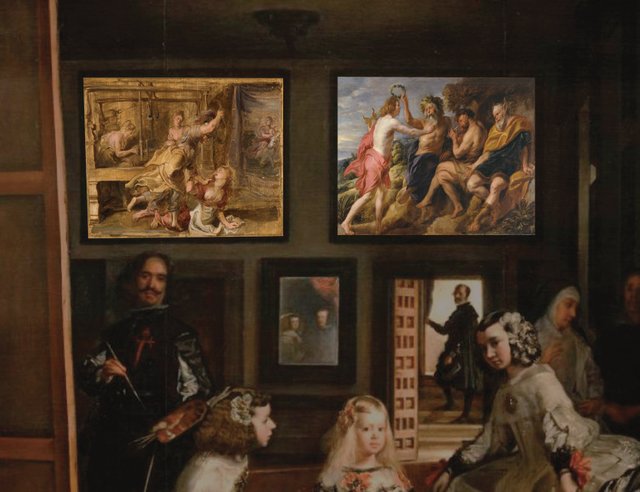
Left to right: Minerva punishing Arachne & Apollo as victor over Pan
In both paintings, the pictures portrayed by Velázquez personal heroes, tell similar stories that belong to Ovids Metamorphosis. In these tales, Gods and Humans have artistic disputes over the dominion of the Arts. By all means, they are artworks destined to question the divine and human aspects of artistic creation and that, after all, tell a story about Art itself. Diego Velázquez, who at the moment of painting this was but an old man, decided to include them in his Masterwork at a time when painting, as an art form, was considered inferior. Las Meninas, surrendered to divine conflict, is a vigorous argument in favor of the importance of painting as magnificent that seems to scream to us:
"¡Look at what my Art is capable of creating! ¡Dare not look for greatness elsewhere!"
It deals with, as with all metamorphosis, the transformation of Velázquez craft into something truly extraordinary that would inspire future generations. A work that speaks sublimely about Art and Man as a Divine Being. From it, the entirety of the painting lies unrestfully over the canvas and despite the immutable nature that is within the painted quality, it seems as if on the brink of moving, as its characters are about to come to life; it has a spontaneity characteristic of photography hidden in the eyes and suggested movements of the characters spread across the room that force our eyes to move between what occurs in the foreground and that which lies in the back. An artifice of geometrical nature that serves the wholeness of the picture.
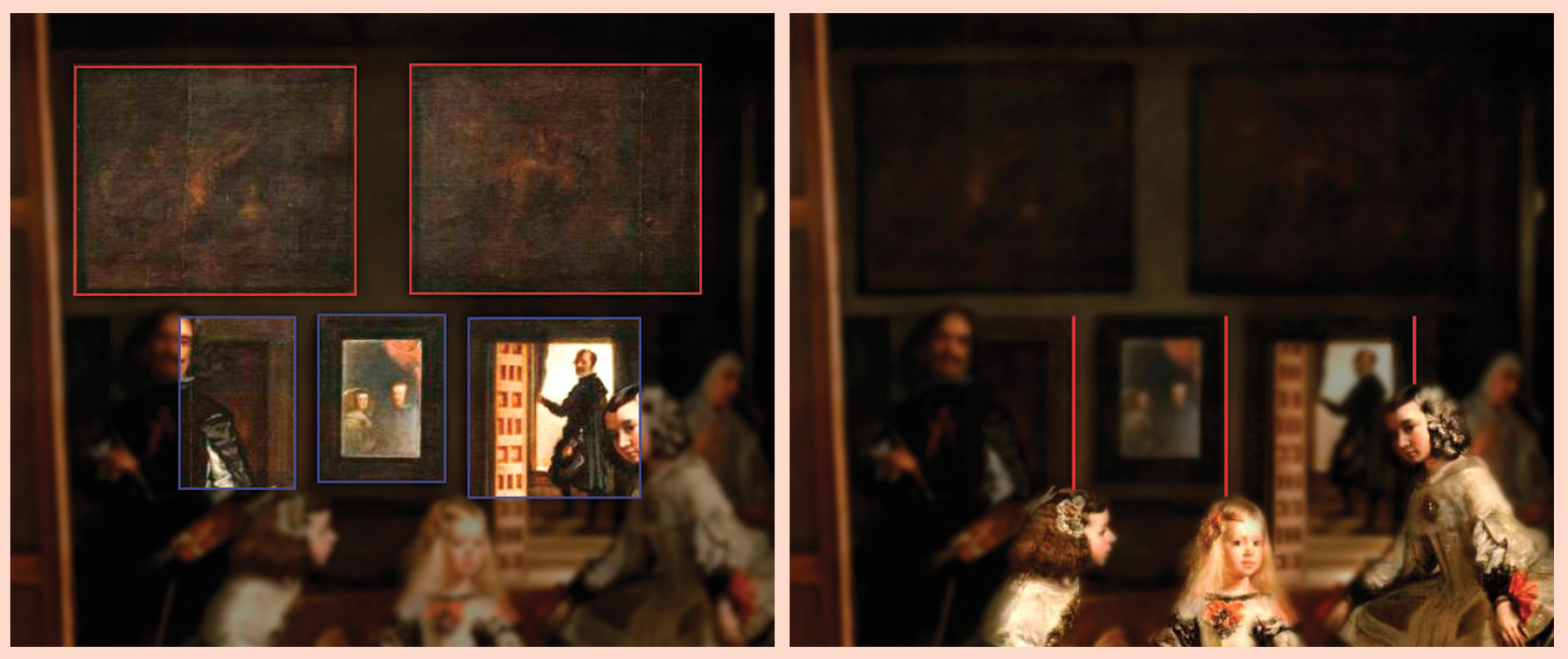
Geometric base and Wholeness between elements in the foreground and at the back
Las Meninas also holds a particularity in its multiple points of focus that travel from Margaret Theresa (at the time the only living child of the King) who lies at the center (if somewhat off) and bathed in light, to the official that stands at the back doorway and travels then to the left to the mirror that reflects the King and Queen. Such is the strength of will of the author, who succeeds in unifying glory and humanity by joining in the points of focus an aesthetic relation given by contrast between Margaret and the officer, and a contextual relation given by the Kings in the mirror and their daughter: Content and Esthetic as one.
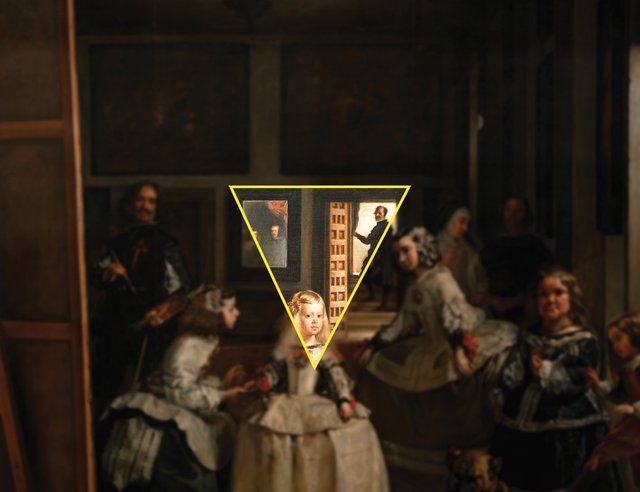
Centers of Focus in Las Meninas
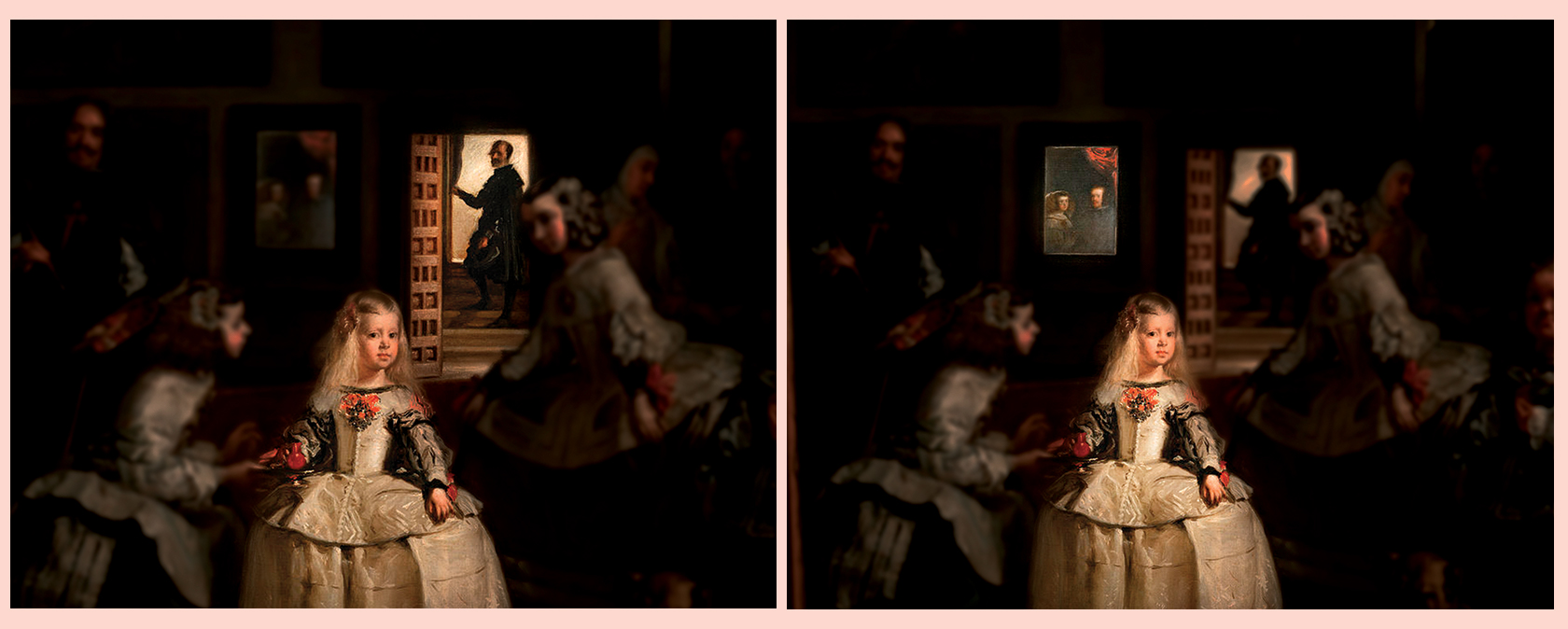
Both Aesthetic and Content are one in Velázquez's Masterpiece
There is much to be said, but I fear if I were to continue any longer I'd attempt against your humanity, it would be enough for me to know that I've at least awakened thou interest in this work and that my words in regards to it were more than simply tolerable.
So many are the things that even the author did not know and many others that he did but didn't fully understand. Many, even, that the understood but ignored. ¿How shall I to be able to tell you of his intentions, those belonging to another soul different than mine, to you without my own getting in the way of them?
There is beauty in the blank canvas that awaits to be transformed, beauty that belongs to all which is but the same and yet somehow ends differently, that which lies within a creation that longs for fullness, that reflects irredeemably what is hidden in he who conceives it and yet, despite its artifices and deceits, there is something incredibly limited in who observes it; good art - if we are to rid ourselves of subjectivities and call things by their name - can't heal us completely, we are to remain, inevitably, broken where we have hurt before. But maybe it can make us aware of the beauty in that which is no longer intact and of the music that comes off that which breaks, of allowing us, in the empty spaces that rest between our cracks, to live without fear of being broken.
Velázquez obsession is latent in the very nature of the painting, an instant both frozen and alive where his characters - some - gaze beyond the canvas and us that stare into it, convinced that that which we are looking at, fragile, fallible and somehow human: is perfect. That we are upon the best this medium has ever offered and where an artist, debated between the divine and human nature of his craft gazes beyond everything that is earthly, to the very horizon.
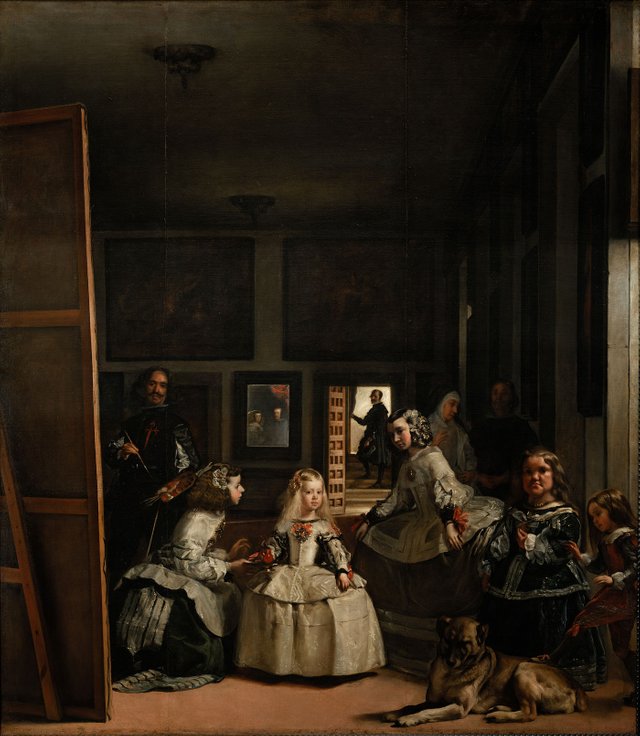
©Alejandro Olivares